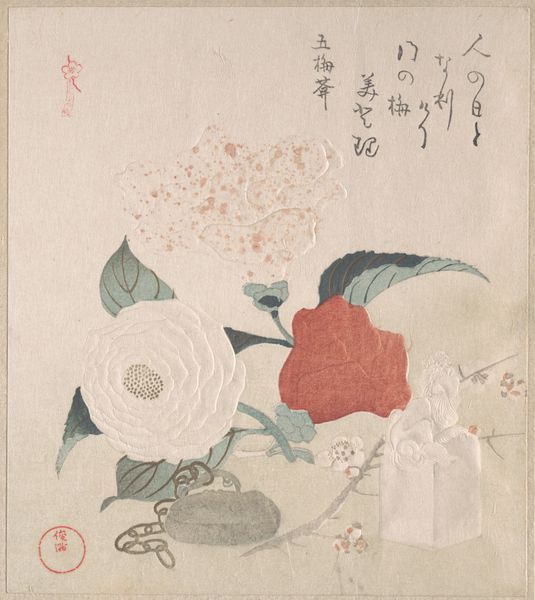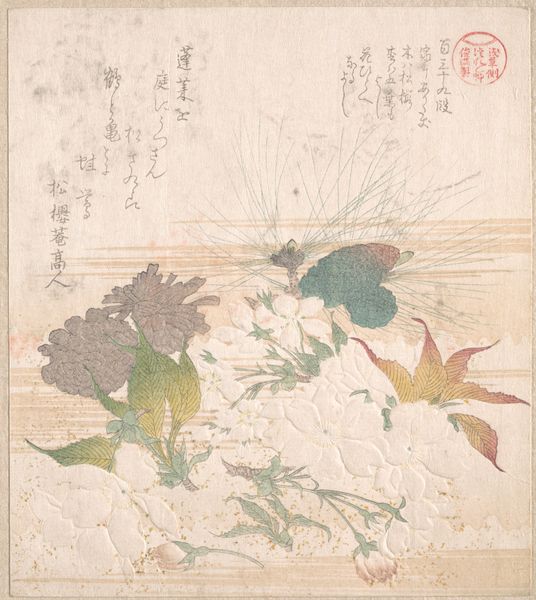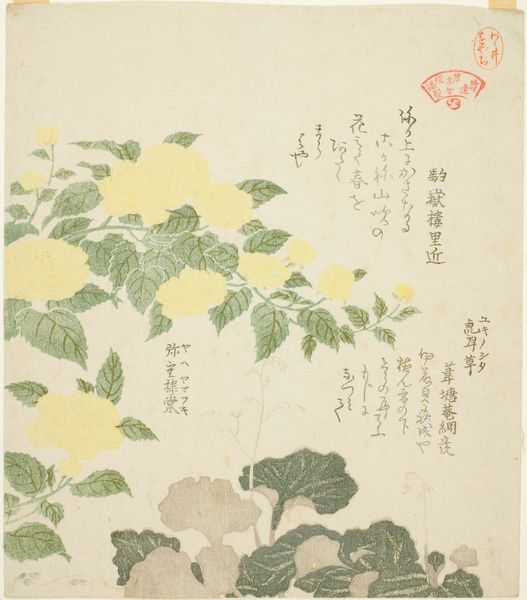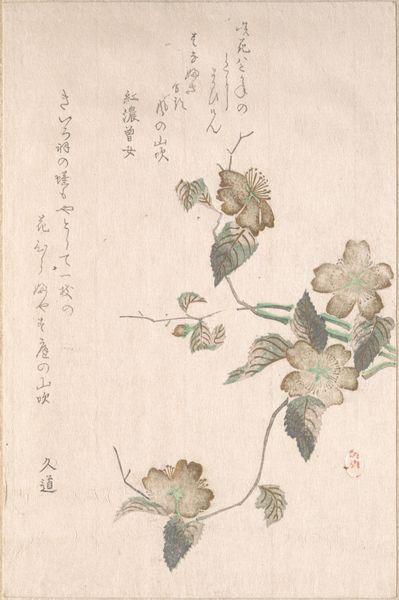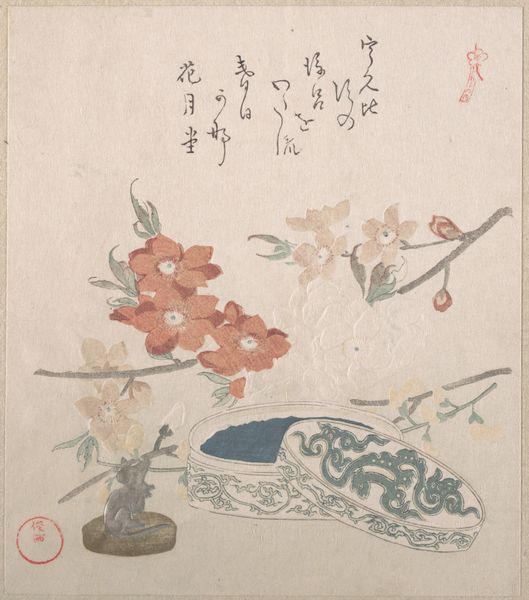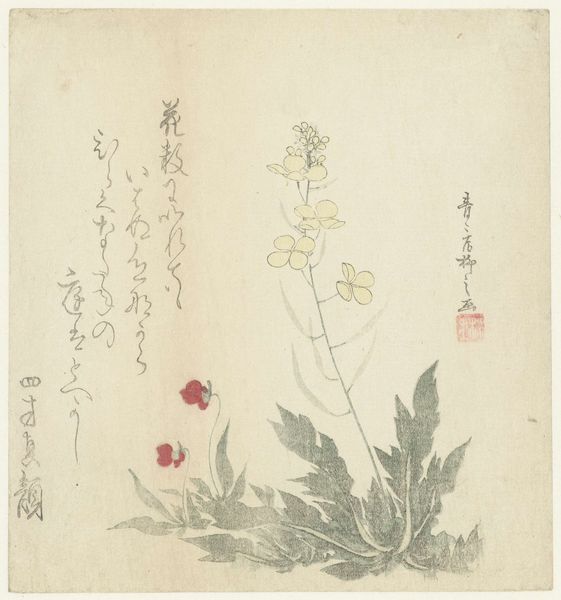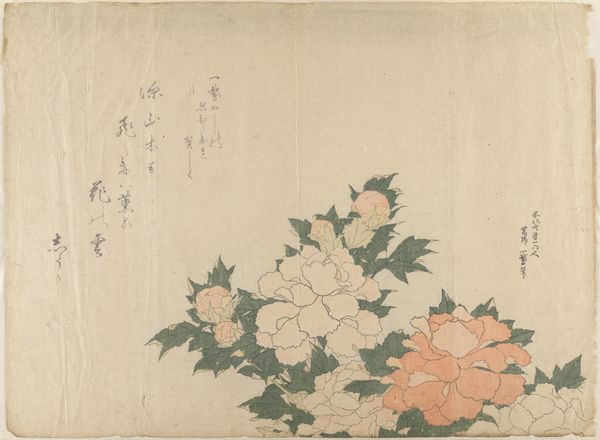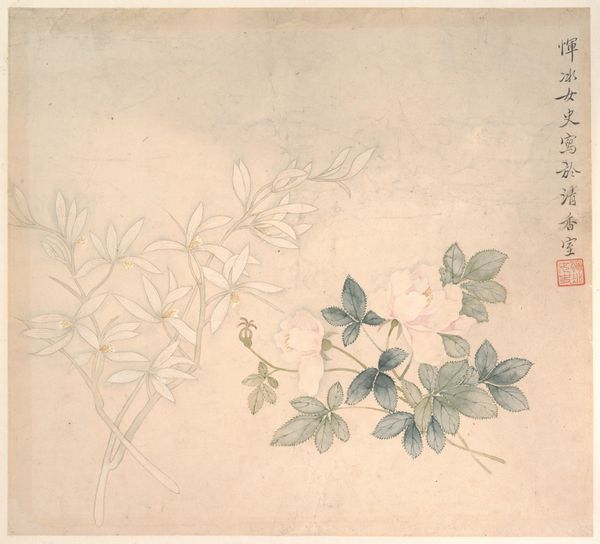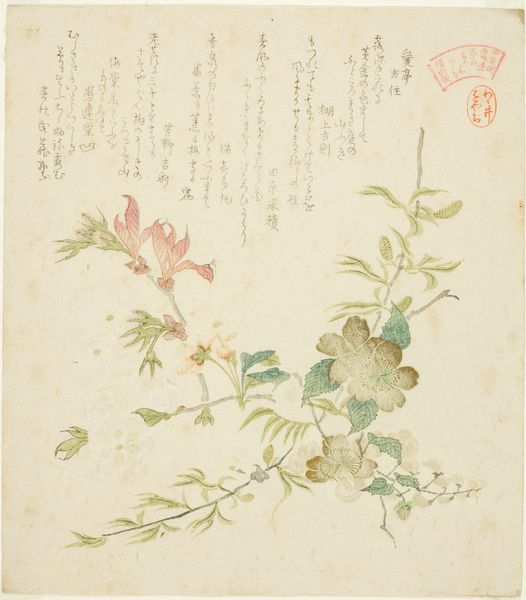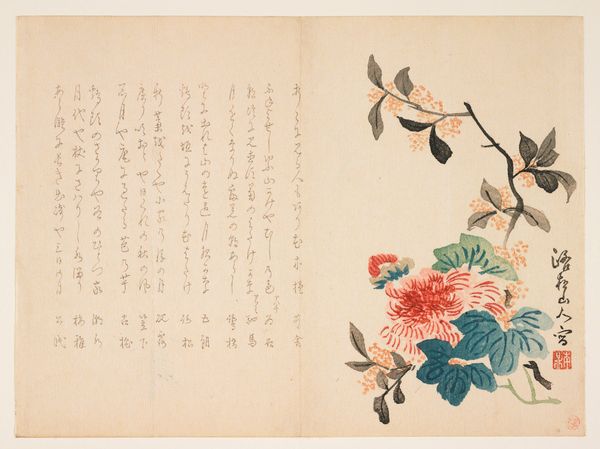
print, watercolor, ink, woodblock-print
#
water colours
# print
#
asian-art
#
ukiyo-e
#
watercolor
#
ink
#
woodblock-print
#
watercolor
Dimensions: 7 9/16 x 6 11/16 in. (19.2 x 17 cm) (image, sheet)
Copyright: Public Domain
Editor: So, this is "(Plum Branch)" by Kubo Shunman, made in 1816. It’s a woodblock print with watercolor and ink, currently residing at the Minneapolis Institute of Art. I’m struck by how delicate it is, the colors are so muted, almost like a memory. What can you tell me about its place in art history? Curator: It's interesting you call it a memory. This piece comes from the Ukiyo-e tradition, a very specific printmaking movement popular during the Edo period in Japan. Ukiyo-e, translating to "pictures of the floating world," was deeply tied to the rising merchant class and their pursuit of pleasure and beauty. Editor: "Pictures of the Floating World"—so, was this type of art considered… lowbrow at the time? Curator: Initially, yes. Traditional art forms were very closely linked to the aristocracy and the Buddhist clergy. But woodblock prints democratized art making it accessible to a wider audience, including the emerging merchant class. This piece featuring plum blossoms connects to existing artistic traditions, yet its very existence as a readily reproduced print challenges the exclusivity that was normally part of the cultural world at the time. How might its ready accessibility have shifted power dynamics and art's role? Editor: I see, making beauty accessible disrupted social norms! The mass appeal challenged what "high art" was. The plum branch—is that symbolism significant within this cultural and political landscape? Curator: Absolutely. The plum blossom is a potent symbol in East Asian art, representing resilience, renewal, and the arrival of spring even amidst the harshness of winter. Here, what does the choice to portray this already deeply symbolic image in the context of a readily available woodblock print potentially communicate? Editor: It reinforces the idea of accessible beauty, resilience not just for the elite but for everyone. It kind of flattens the hierarchy of symbolism. Curator: Exactly. Seeing how art interacts with social structures adds layers to its appreciation, doesn’t it? Editor: It definitely does. I will not see such botanical prints in the same way.
Comments
No comments
Be the first to comment and join the conversation on the ultimate creative platform.
